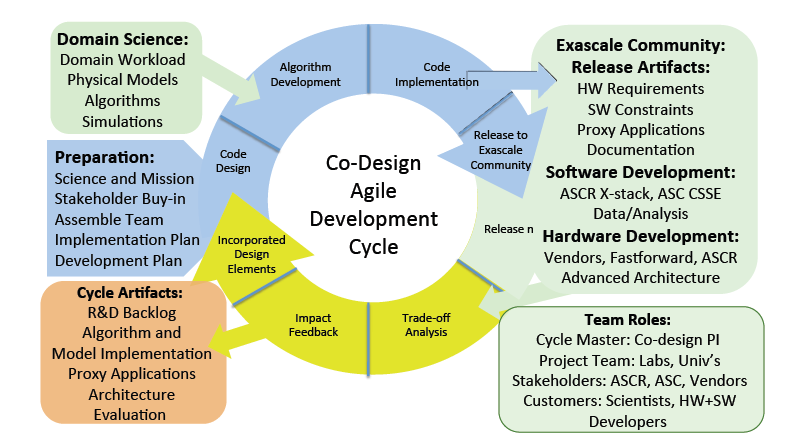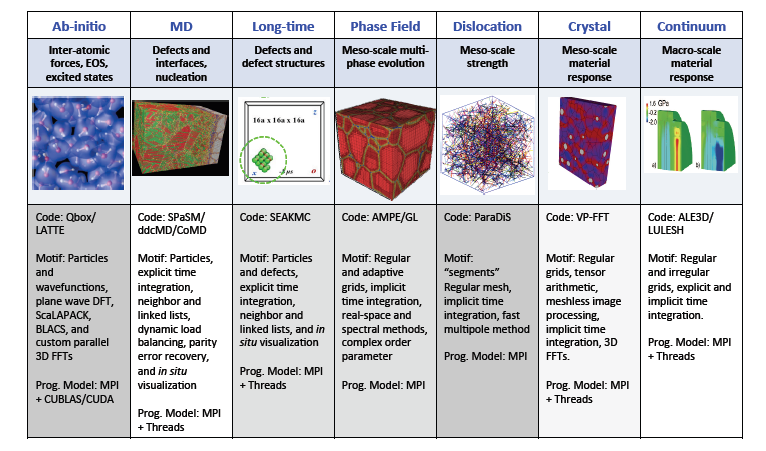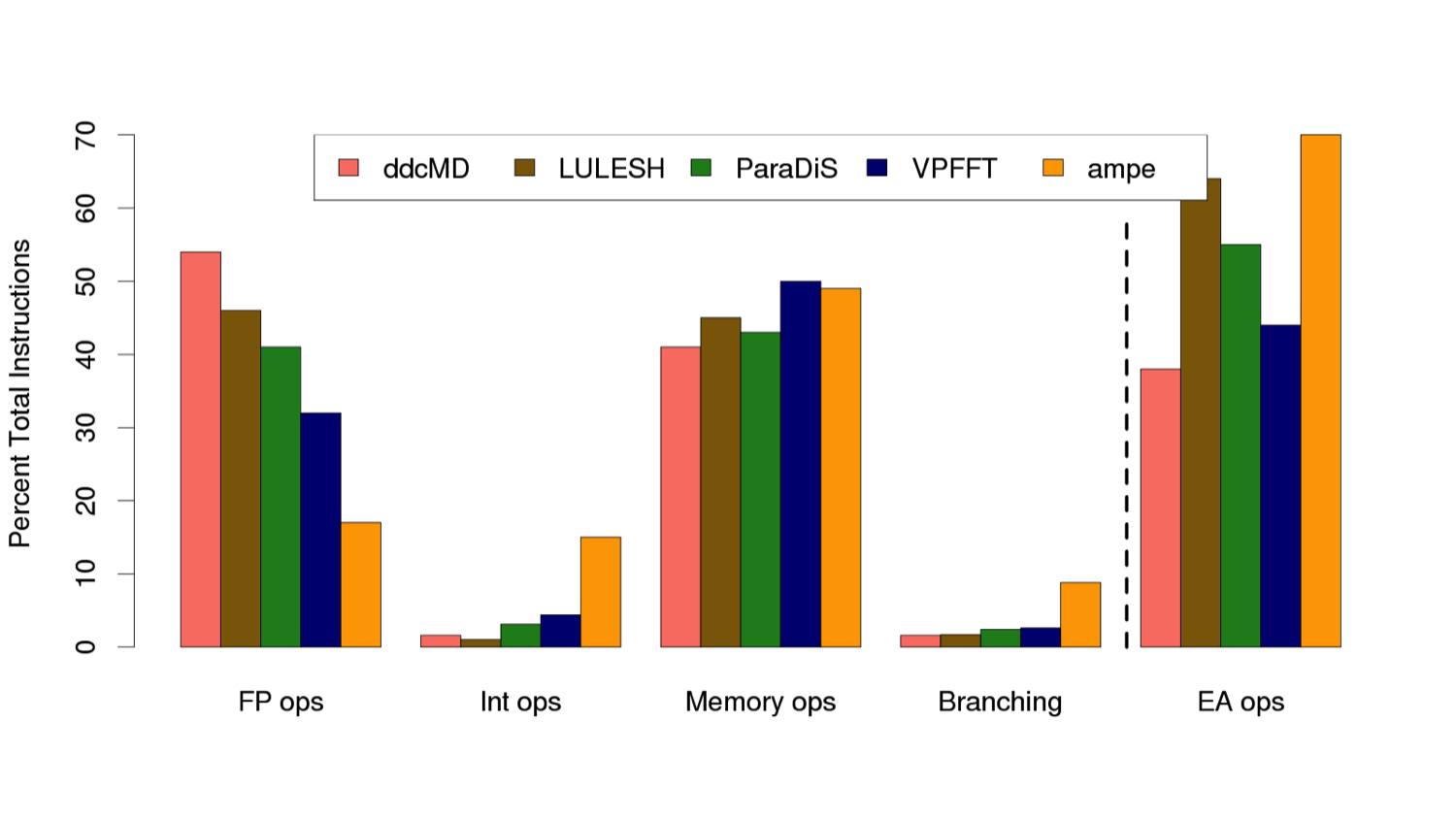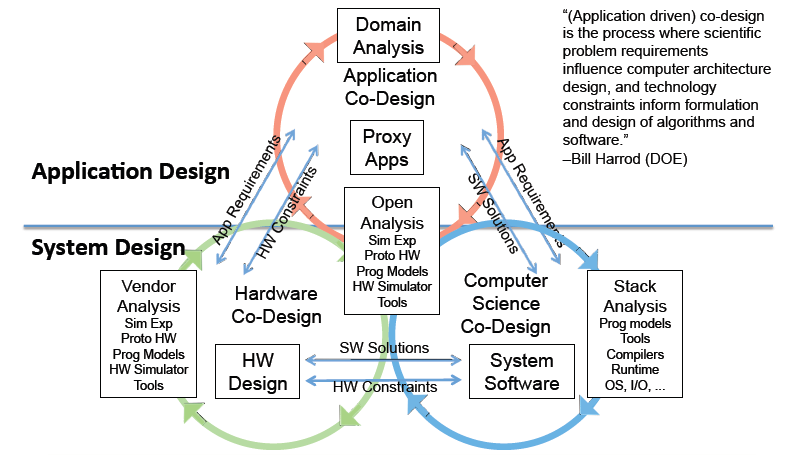ExMatEX
From Modelado Foundation
| ExMatEx | |
|---|---|
| Location to an image/logo (if any) Image Caption | |
| Developer(s) | LANL, LLNL, ORNL, SNL, Standford University |
| Stable Release | x.y.z/Latest Release Date here |
| Operating Systems | Linux, Unix, etc. |
| Type | Computational Chemistry? |
| License | Open Source or else? |
| Website | URL here |
ExMatEx (Exascale Co-Design Center for Materials in Extreme Environments)
Application
Kernel Name
Description
Download
Co-Design Agile Development Cycle
Creation of a functional exascale simulation environment requires our co‐design process to be adaptive, iterative, and lightweight – i.e., agile.
Physics Fidelity
Exascale is about better Physics Fidelity.
Engineering assessment of materials behavior is limited by physics fidelity.
High fidelity adaptive materials simulation is a direct multi-scale embedding of fine-scale simulation into coarse scale simulation.
Direct Multi-scale Embedding
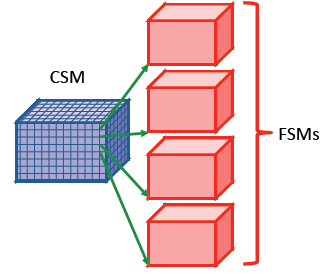
Direct multi-scale embedding requires full utilization of exascale concurrency and locality.
- Brute force multi-scale coupling: Full fine scale model (FSM, e.g. a crystal plasticity model) run for every zone & time step of coarse scale mode (CSM, e.g. an ALE code)
- Adaptive Sampling:
- Save FSM results in database
- Before running another FSM, check database for FSM results similar enough to those needed that interpolation or extrapolation suffices
- Only run full FSM when results in database not close enough
- Heterogeneous, hierarchical MPMD algorithms map naturally to anticipated heterogeneous, hierarchical architectures
- Escape the traditional bulk synchronous SPMD paradigm, improve scalability and reduce scheduling
- Task-based MPMD approach leverages concurrency and heterogeneity at exascale while enabling novel data models, power management, and fault tolerance strategies
Metrics
Metrics for computational work measure the behavior of the code within the computational ecosystem (e.g. HW/Stack/Compiler/etc.)
- Pin is a tool that measures utilization of specific functional units in the processor (e.g. floating point operations)
- Both ddcMD and LULESH are highly optimized codes. Pin analysis on entire code suite (see VG 3) in progress
- Analysis for Intel Sandy Bridge processor with Intel compiler (cab)
- LULESH percent vector utilizaMon: Intel compiler = 8.7%, GCC = 0.15% (of FP)
Productive Exascale Simulation
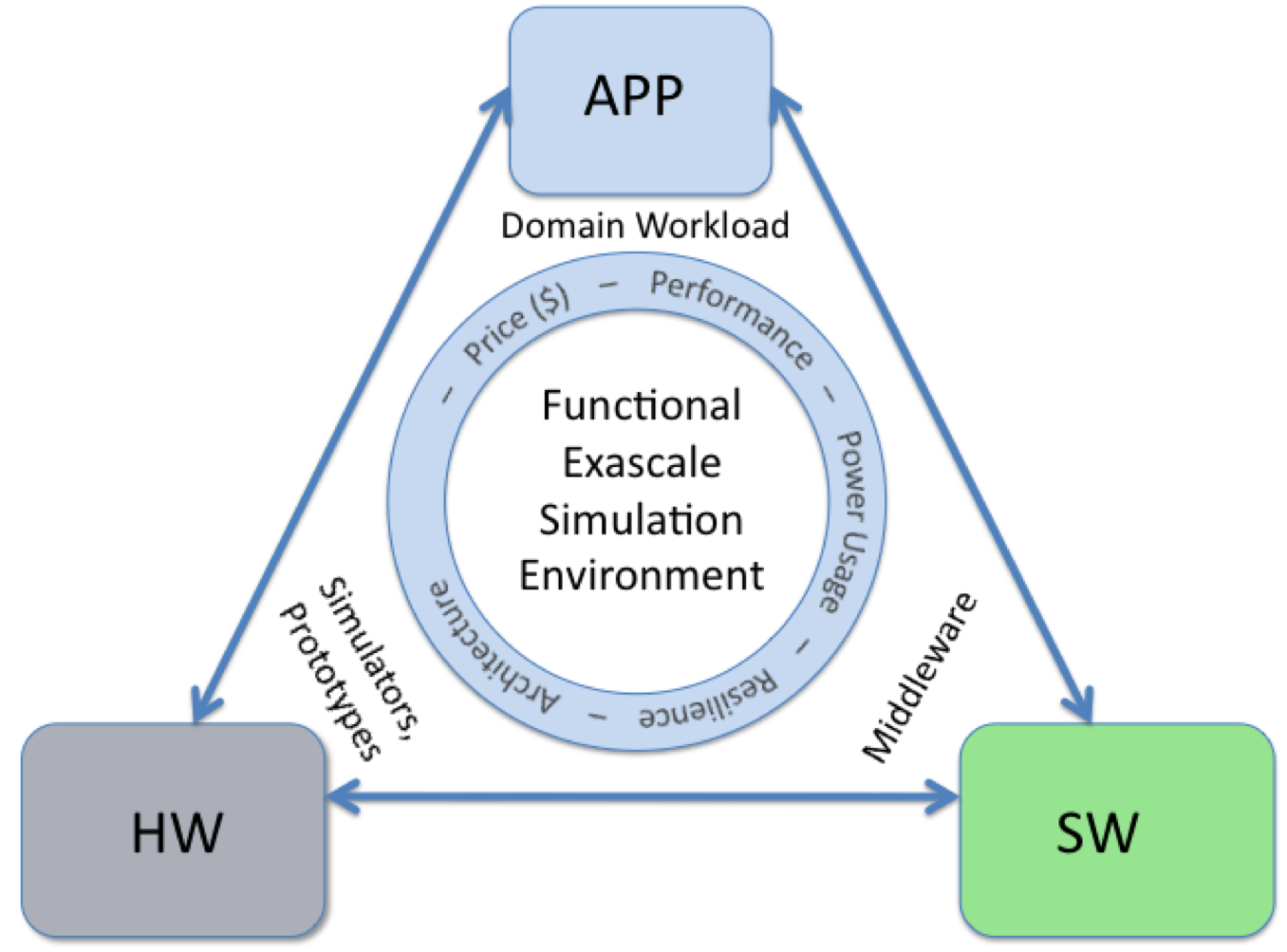
Productive Exascale Simulation requires the coordinated efforts of Domain Scientists, Computer Scientists and Hardware Developers.
- Many, many‐task coordination issues
- Greater than one hundred million, more is different
- Synchronization (essential for time evolution)
- Stalls (keeping everyone working)
- Better exposure into hardware details for the exascale application developer
- Compiler Interface
- Simulators+Emulators+Tools measure code/ecosystem metrics
- Are we defining the right metrics?
- Application developers need a better way to express (code) the computational work of the application into the exascale computational ecosystem
- Better programming models (e.g. domain specific languages)
- Runtime support for heterogeneous multi‐program, multi‐data (MPMD) applications
- The petascale science apps are NOT general apps. They have been painfully optimized for the petascale architecture by the application developer. How do we get exascale lessons learned into quotidian science applications (VASP, LAMMPs, …)?
- The petascale codes already account for data movement, it is only going to get worse
- Bandwidth to memory is scaling slower than compute
- Memory access is dominating power
- The exascale codes will need to learn to adaptively respond to the system
- Fault tolerance, process difference, power management, …
Lesson Learned
What did we learn from creating petascale science apps and what does that mean for exascale?
- Problem: Fault tolerance is a problem at 105 and will be a much bigger problem at 108:
- Solution: Application assisted error recovery
- Parity error triggers exception handler (like FPE)
- Application knows what memory is “important” can catch exception and repair data
- Exascale: Runtime will need to support task migration across nodes
- Solution: Application assisted error recovery
- Problem: Scaling (absolutely crucial for exascale) requires very very good load balancing:
- Solution: Decomposition based on Computational Work
- Particle-based domain decomposition - processors own particles, not regions - allows decomposition to persist through atom movement
- Maintain minimum communication list for given decomposition - allows extended range of “interaction”
- Arbitrary domain shape - allows minimal surface to volume ratio for communication
- Exascale: Decomposition has to become dynamic and adaptive
- Solution: Decomposition based on Computational Work
- Problem: HW specific algorithms are crucial for performance but limit portability
- E.g. Linked cells map better to current petascale systems than neighbor lists
- Ordering neighbors within a cell exposes SIMD parallelism
- Problem: I/O does not work with too many files or one large file
- Solution: Divide and concur, what is the optimal number of files?
- Exascale: Dedicated checkpoint filesystem (flash?)
Workflow of Co-Design
Model for the Workflow of Co-Design between Application Co-Design Centers, Vendors, and the broader Research Community.
